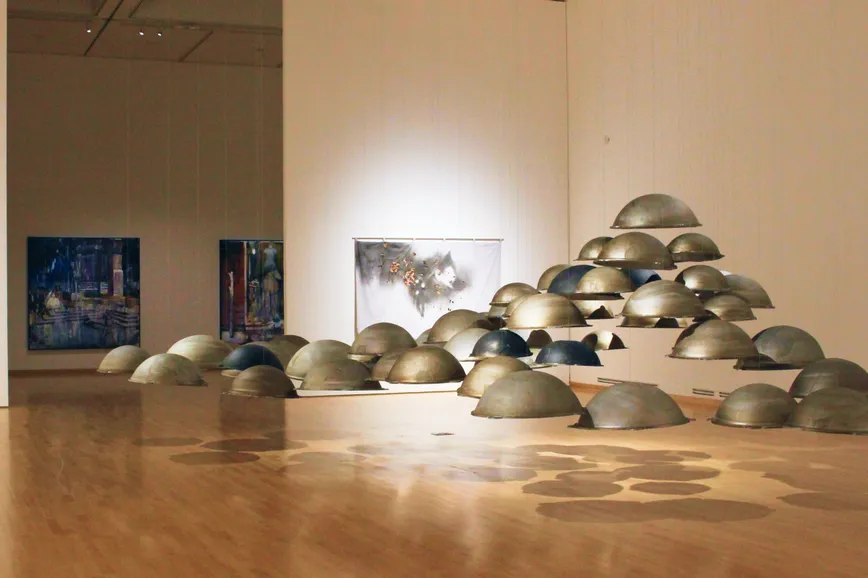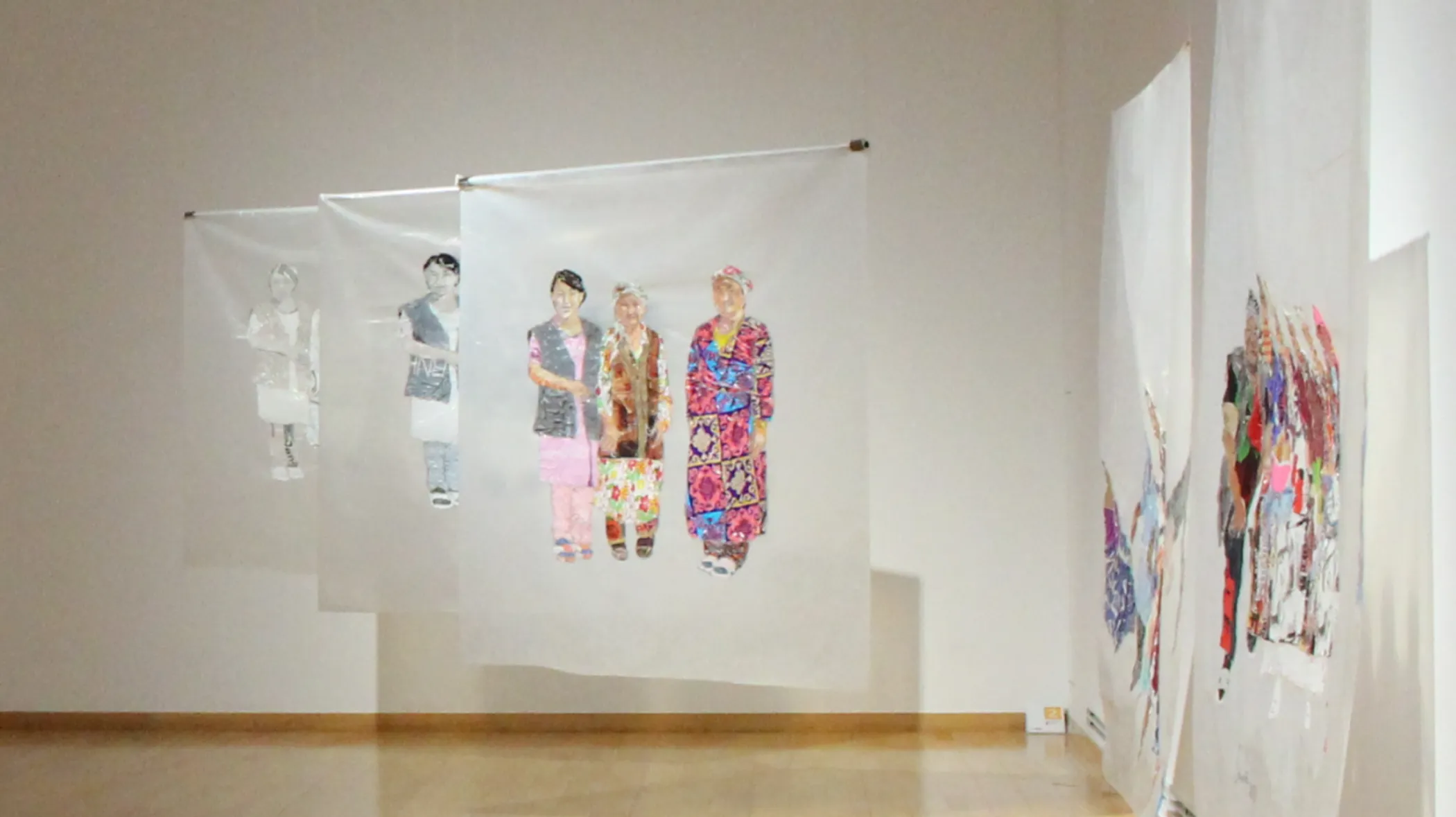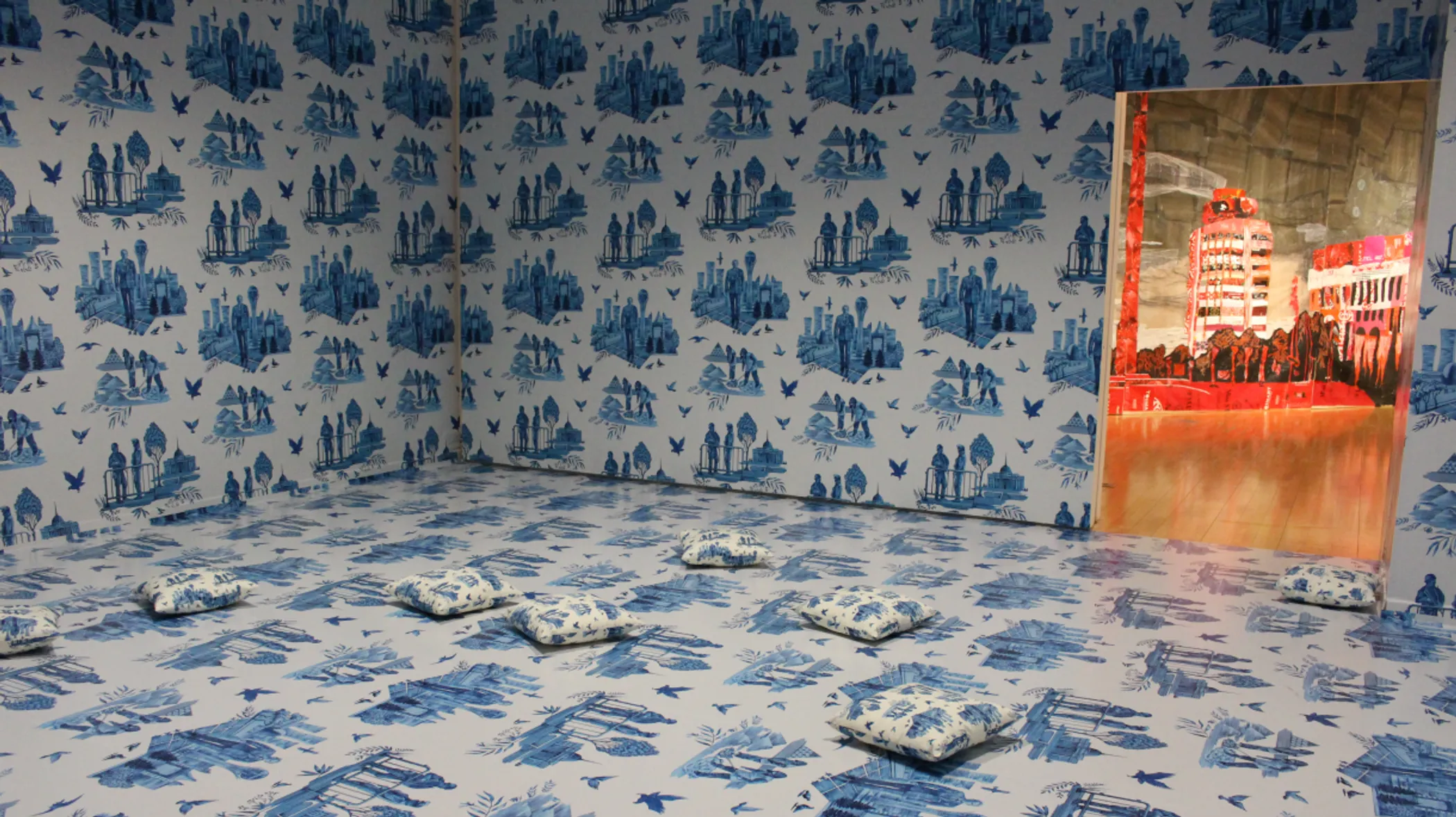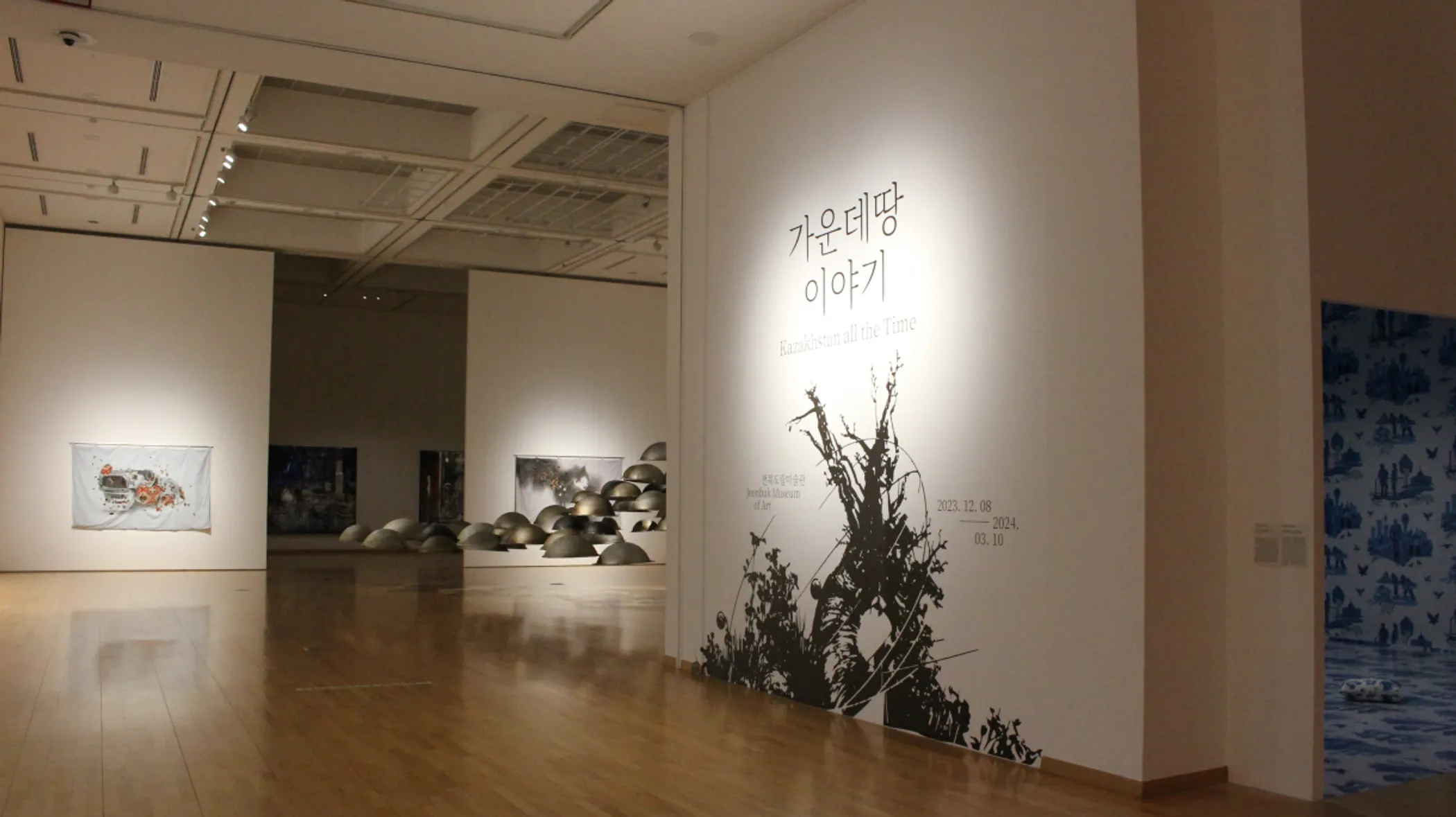On December 8, the Jeonbuk Museum of Art (JMA) in South Korea presented its latest exhibition, "The Tales of Middle-earth: Kazakhstan All the Time". The exhibition will be running until March 10, the Eurasian Cultural Alliance reports.
Central to the exhibition is a profound exploration of the 'social role of art,' emphasizing marginalized voices and social practices aimed at overcoming binary distinctions. Departing from the Western linear view of time, the exhibition adopts Emmanuel Levinas's Time of the Other. This concept delves into the depth of time beyond a linear extension, producing time through random connections with others.
The exhibition is divided into three sections – The Past, The Present, and The Future.
"The Past: Echoes of Eternity"
The section reconstructs the past as a fixed memory mutated through myths and legends. Artists focus on the process of creation and temporal singularities, not fully complete notions of things never turning to objects. Artworks in the section include those inspired by the oral tradition strong to Kazakhstani identity as well as modern challenges related to it. This part of the exhibition includes the artworks of Kokonja, Kuanysh Bazargaliyev, Aida Adilbek, Bakhyt Bubikanova and Kyzyl Tractor.
"The Present: Mirrors of the Now"
This section challenges the modern view of time, showing the present as a fluid state connected to both the past and the future. Artworks address political and social domination, unrest, and complex transitionalities encapsulated in the social tapestry of the country. The hall showcases the artworks of Nurbol Nurakhmet, Roman Zakharov, Askhat Akhmedyarov, Saule Dyussenbina, and Saule Suleimenova.
"The Future: Visions and the Virtual"
The third section explores artists' responses to a rapidly changing society due to technological advancements. Artworks combine traditional elements with contemporary technology and capture anti-utopian futures. The works include Marat Dilman’s photography, a hyperrealistic series by Lyazzat Khanim, as well as Yelena and Viktor Vorobyevs. The installation ‘Room of Fear. The Rollercoaster’ of the latter creates a space to cut away from time, providing an anti-white box immersive experience.
The exhibition challenges conventional views of time, identity, and societal structures. It invites viewers to engage with the past, reflect on the present, and contemplate the possibilities of the future through the lens of Kazakhstan's socially engaged art.



